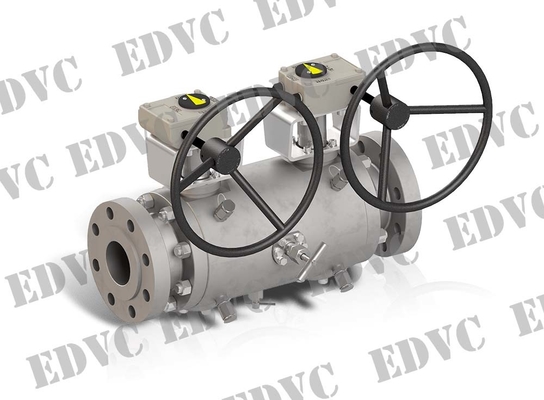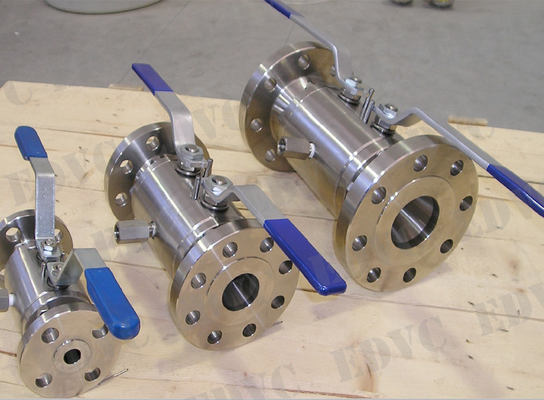GALLERY
PRODUCT DESCRIPTION
Single And Double Block & Bleed Ball Valves
In conditions of space constraint, it is more and more important to find compact solution. As you can see here above one valve is performing the same function of three valves all together and allows a full safety on the line during maintenance operations, not to consider the important reduction of the leakage points on the line. DBB/SBB valves can be used for CHEMICAL INJECTION AND SAMPLING (through a quill), PRESSURE CONNECTIONS (instrumentation mainly), PROCESS ISOLATION (located in the primary process stream).
DBB/SBB valves are tested according to API 598 testing procedure and the testing include the bleed functionality. In case of API DBB valves, PR type testing and production testing up to PSL3G are available.
escription:
VALVE DESIGN: based on API 6D and Customer requirements
TEMPERATURE RANGE: -150 to 662°F (-101 to 350°C)
SIZE: NPS 2-56 (DN 50-1400)
PRESSURE RATING:ASME 150 - ASME 2500
FACE-TO-FAC::As per API 6D standard
END CONNECTIONS: RF, RTJ as per B16.5 &B16.47; BW, Butt Welded as per B16.25; SW, Socket Welded as per B16.11 Hub connection
BODY DESIGN: Forged bolted two-piece and three-piece
SEAT DESIGN: Soft or metal seated with Hardfacing on ball and seats; Self relieving seats; Double piston seats; Combination seats; Interchangeable seats
FEATURES:
Double block and bleed design (DBB);
Secondary seals in pure Graphite;
Anti-Static Device;
Anti Blow out stem;
Emergency sealant injection on seats and stem available;
Low fugitive emission stem packing available;
O-ring /Lip seals and Graphite configuration;
CRA overlay on all dynamic sealing areas or on all wetted parts available;
Extended bonnet for low & high temperature available
OPERATOR:
Manual: wrench or Gear with padlocking;
Actuated: Pneumatic/ Hydraulic/Electric
WHY USE A EDVC DOUBLE BLOCK AND BLEED VALVE?

EDVC Double Block and Bleed Valves replace existing tradi-
tional techniques employed by pipeline engineers to generate a double block and bleed configuration in the pipeline.
Conventionally, in order to achieve a double block and bleed system, engineers would install two standard isolation valves and a separate facility for bleeding the cavity in between. Space is usually at a premium in the refinery environment, and this approach – requiring an additional valve unit to be installed as well as a “T”-junction to allow the cavity to be bled – more than doubles the space required compared with a single valve system. This increase in size can often make the installation unfeasible, especially where multiple LEAK valves along the line are to be upgraded.
EDVC Double Block and Bleed Valves provide the reduction of potential leak points.
Tackling fugitive emissions is high on the agenda for valve end user. The problems presented by these emissions are multiple – not only does los- ing valuable media through leaks carry an economic cost, but the emis- sions are also a significant contributor to air pollution and climate change. As well as this, emissions of volatile compounds can lead to long term health risks for employees and local communities, and escaping flamma- ble substances can increase the risk of explosions. While the volume of medium escaping from any given leak may be very small, the cumulative effect across a large facility can add up to a significant proportion of the plant’s total emissions. Any seal between two separate pieces of materi- al represents a potential leak path and therefore increasing the number of different sections of pipe required for a valve installation significantly increases the likelihood of media escaping from the system.




Leave your message